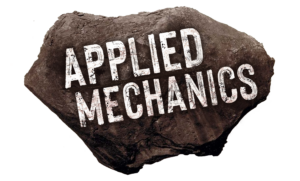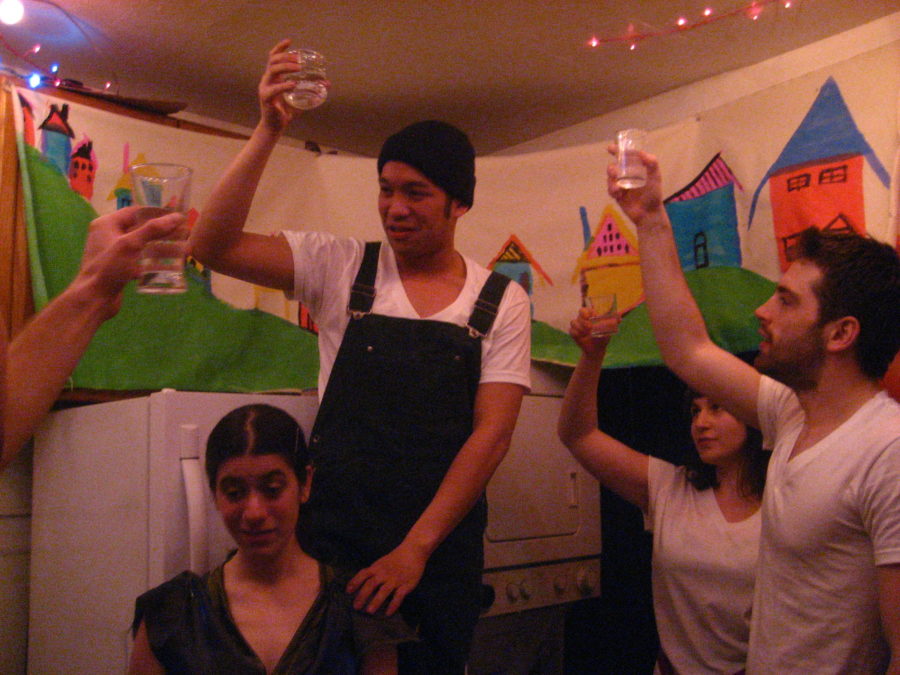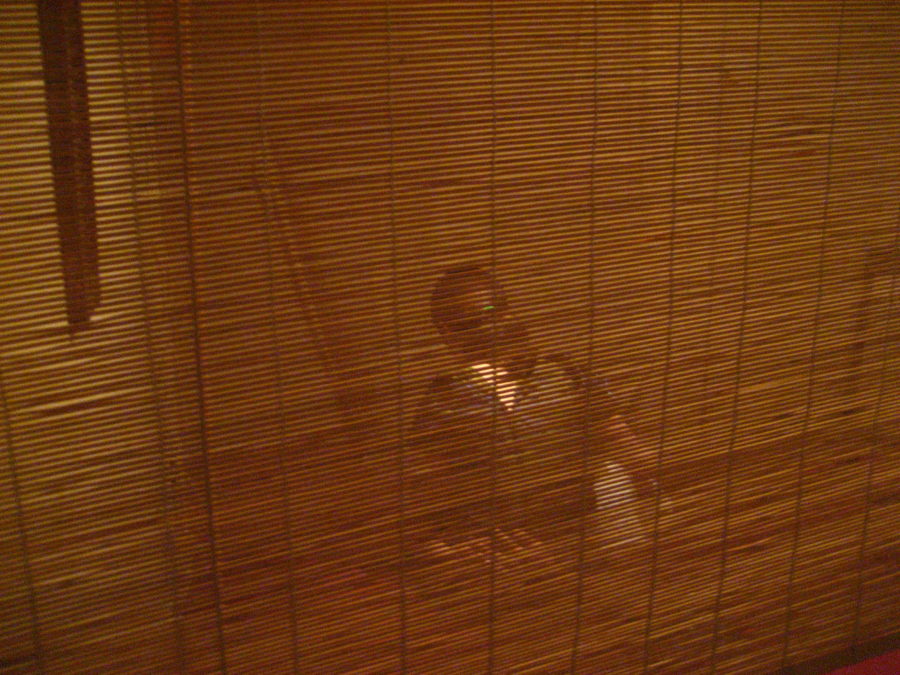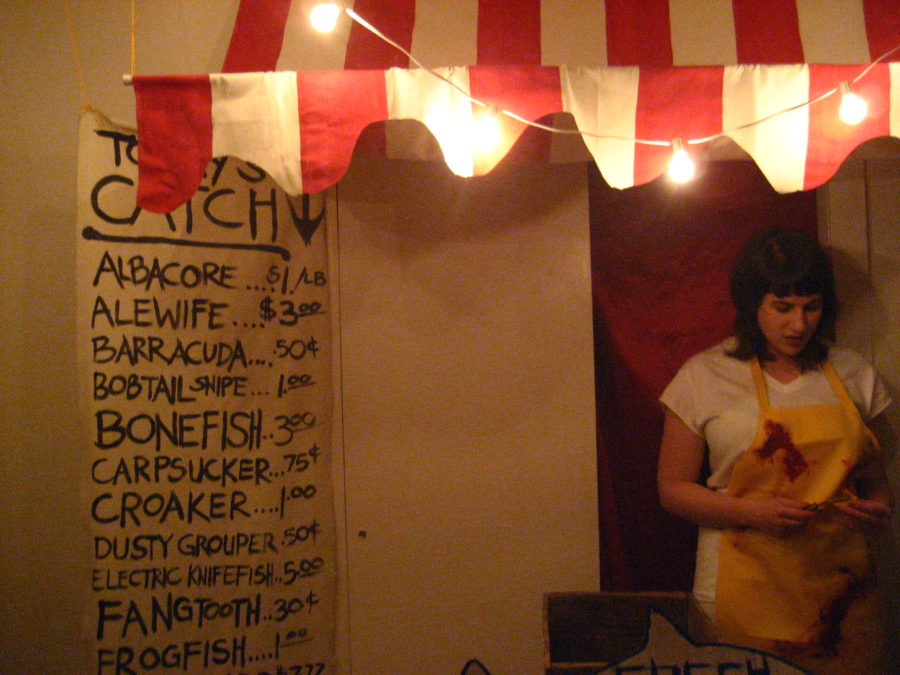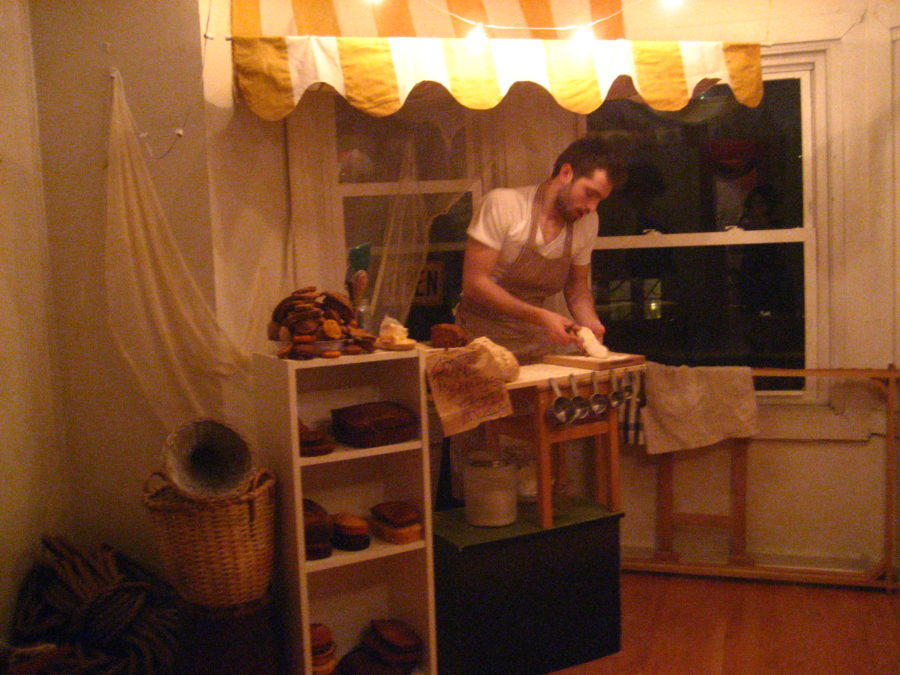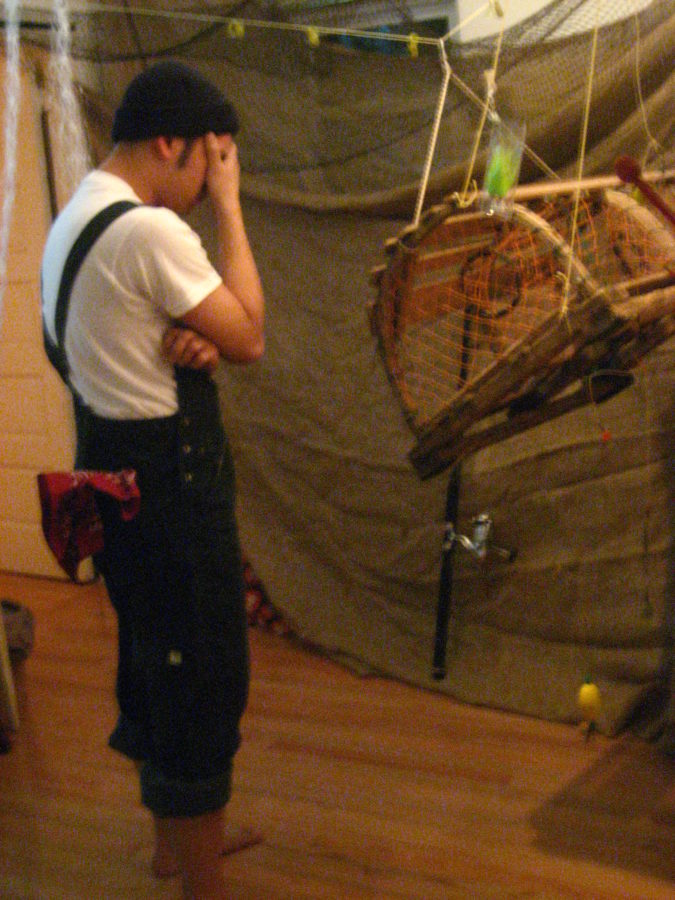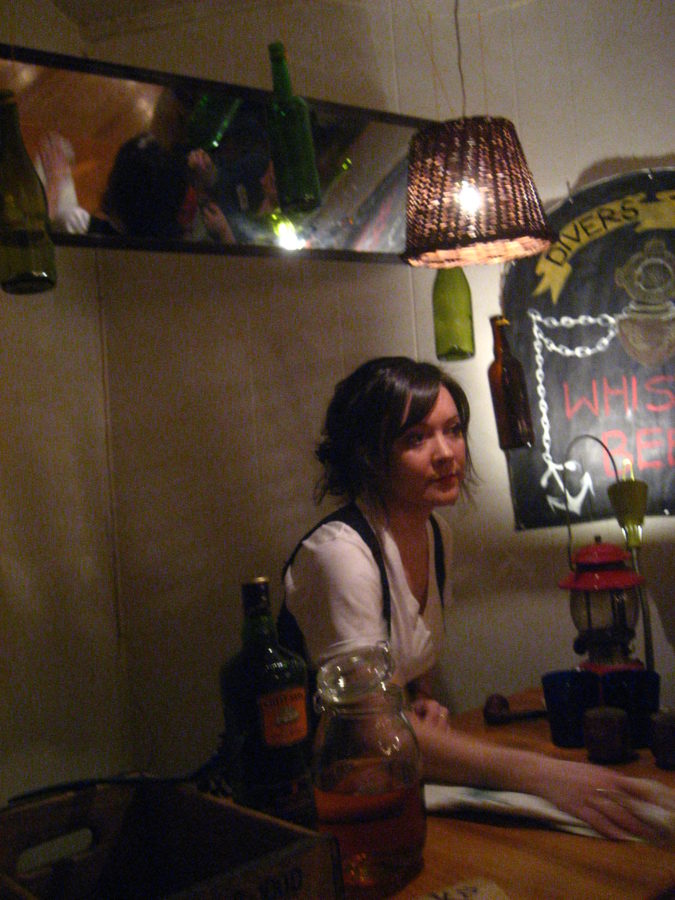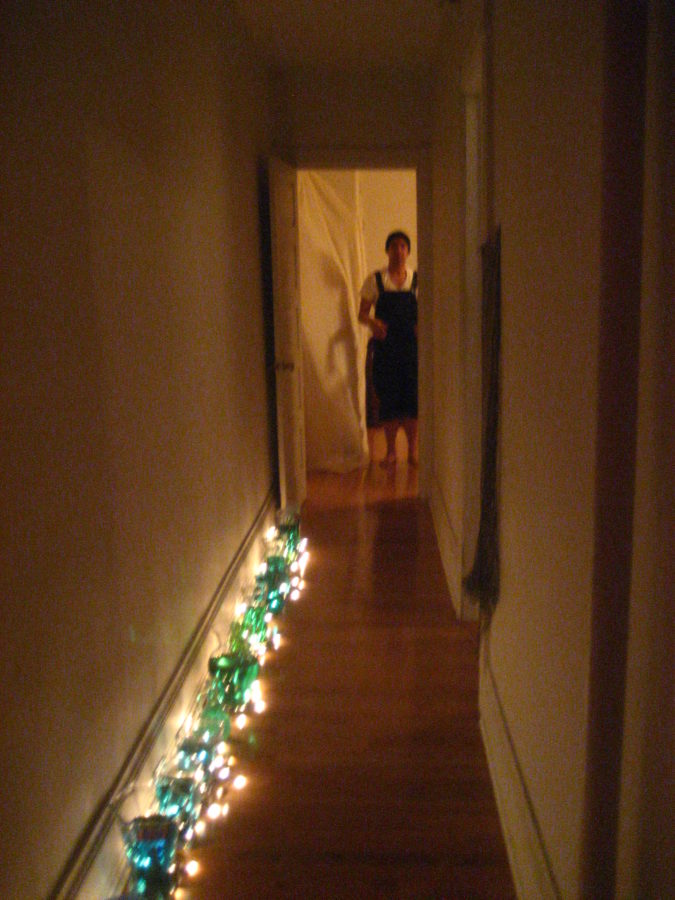Ruminations on Applied Mechanics’ beginnings, by Becky Wright
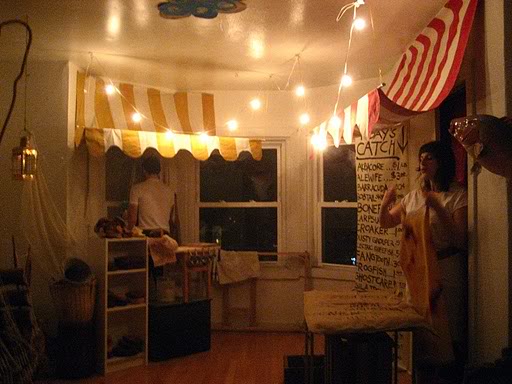
Applied Mechanics staged its first show—an immersive adaptation of the Selkie myth—in my apartment on Cedar Avenue in 2009. We performed it three times in one night, on Valentine’s Day. We did not have our name yet. Here are some snapshots I remember from that process:
- Standing with John Jarboe, who had just moved to town from Michigan and Jess Hurley, who was—incredibly—my intern at InterAct at the time, in my living room and saying, “We have to make up a dance. How should we do it?” The doorbell rang and I went downstairs. When I returned, they had made up a dance.
- Needing to invent a convention for “time passing” and, at Justin Jain’s recommendation (he was playing the fisherman) everyone spread out to different rooms of the apartment to brainstorm some physical proposals. I remember walking from room to room as people worked, the thrill of seeing the idea come to life.
- Returning to the apartment after doing some show-related errands on the day of the show (I had a stick shift Nissan Sentra at the time, so couldn’t really delegate any errand-running because nobody else drove stick—and of course there weren’t really any extra hands to run errands for us anyway) and seeing Maria out front of the house, with big strips of white fabric laid out on the concrete, painting houses on them with fluorescent ink. “For the village scene,” she said.
Later that day, we hung the paintings over the kitchen cabinets. Sometime between hot-gluing the last set piece in place and watching from the porch as the first audience member approached the building, we wondered quietly if anyone would come.
(They did. And the highest praise we got was from one of Catharine Slusar’s daughters, who, reportedly, woke up the next morning and said, “Was it a dream?”)
I think about that process now with great fondness and something like bemusement. I both can’t believe we really went through with making that show—we had no idea what we were doing!—and marvel at how many seeds were planted then that have blossomed into mainstays of our artistic practice. From company meals to group decision making, from physical prompts to collective vision, we have spent the last ten years practicing and finessing some of those early inklings until they have become second nature, sharp tools, dearly held traditions.
Last month, we got a bunch of artists together to begin workshops on the earliest seedlings of ideas for a new piece. With the trilogy that culminated in THIS IS ON RECORD behind us, we are in that rare and exciting open space of starting from scratch with a brand new exploration. We think we are exploring themes of ascendant generations, fables and fairytales, anti-dystopias, caretakers, and speculative futures. But who knows what it will become? In the five sessions we spent working with a rotating roster of artists (including the return of OG App Mechs superstar Justin Jain) our minds were continually blown, and we left the workshop buzzing and questioning. What an incredible gift, to be pulled forward by wonder, connection, and sincere curiosity, into the next stage of work.
We really did not set out to start a theater company when we made SELKIE. There was an experiment Maria and I wanted to do, rooted in some of our frustrations and quandaries about the medium, as well as some of the shared eccentricities of our aesthetics. And then it worked. And so we wanted to do it again. And some of the same people wanted to come back and do it with us. There is so much more I could say about this, of course, and about the years in between. And Maria and I have sometimes remarked to each other that some of what fueled those first shows was the power of having a jogging buddy: I was showing up for her, and she was showing up for me. But then, that’s kind of the bedrock of the collaborative form, isn’t it? We really didn’t know how that first show was going to turn out. Not just whether it would be good or not, but what it would be like at all and how we were going to get there. While we’ve honed some tricks and systems for embarking on the journey, miraculously, thankfully, wonderfully, we really don’t know how this next one is going to turn out either. So here’s something I’m thinking about these days, one of the many lessons I’ve learned from my time with Applied Mechanics, and one that, on a good day, feels like it has the potential to be positively transferable to this moment we’re living in, to other parts of life: Sometimes you have to do what you think is right with people you believe in and trust that something good will come of it. Sometimes that’s the best you can do. Sometimes doing that changes everything.
